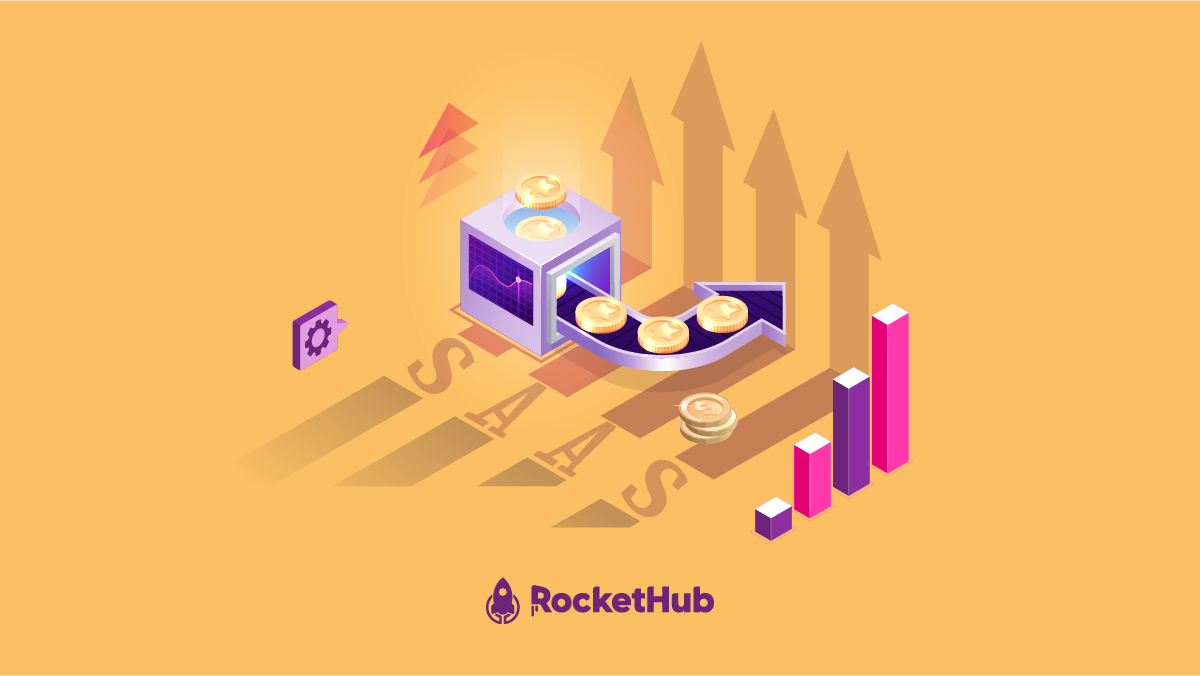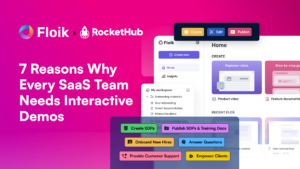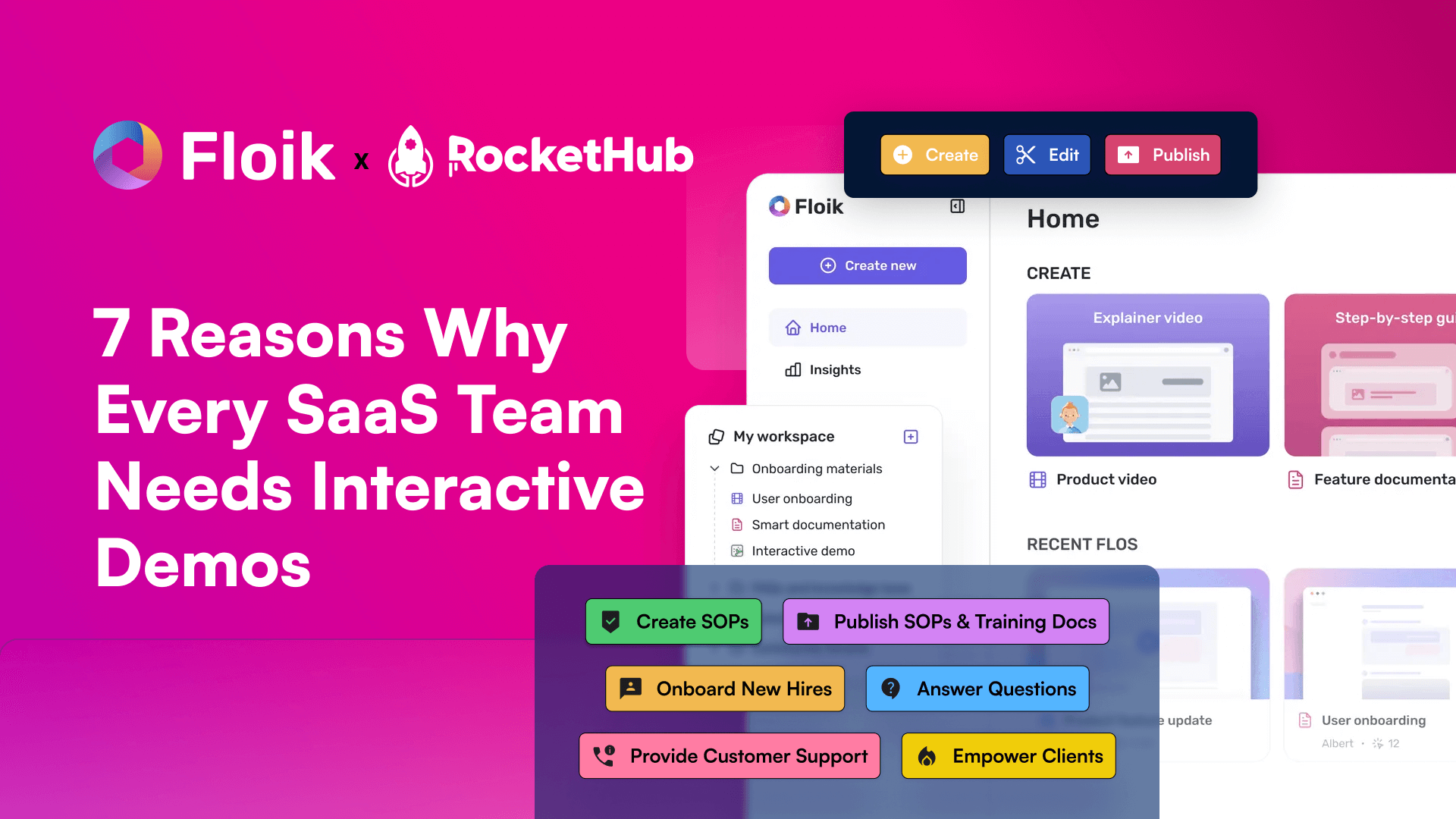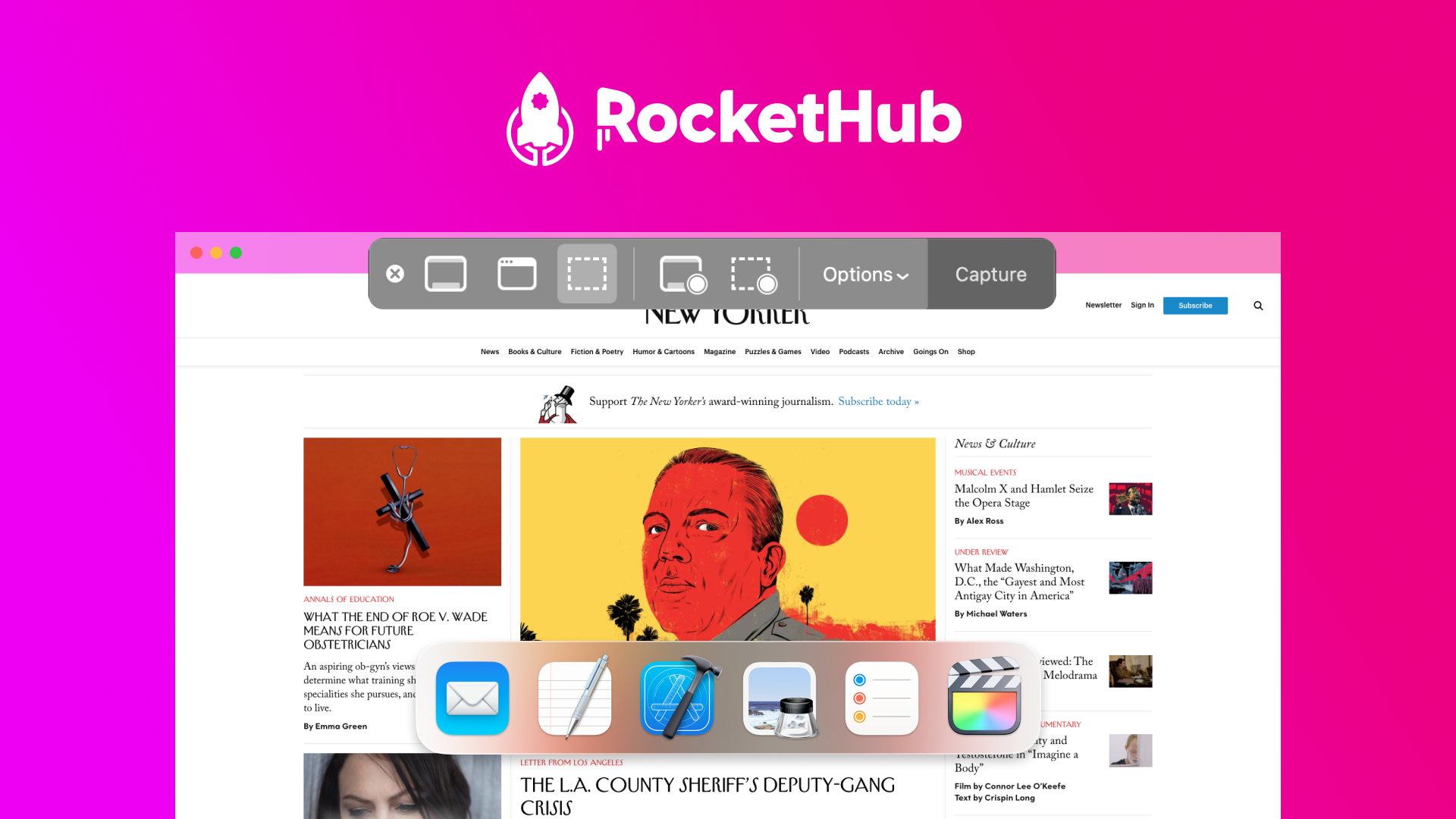
5 Key Components of Extreme Revenue Growth For SaaS Companies
- Angel Alfred
- March 13, 2023

As competition intensifies, it’s essential for SaaS companies to stand out and achieve extreme revenue growth. But many SaaS companies struggle to achieve sustainable revenue growth due to the complex nature of the industry. That’s why in this blog post, we will examine the 5 key components that are essential for revenue growth for SaaS Companies.
Why is Revenue Growth Important for SaaS Companies?

Revenue growth is important for SaaS (Software as a Service) companies for several reasons:
- Revenue growth is a key indicator of a company’s success, and investors are interested in investing in companies that have the potential for high growth. SaaS companies typically have high-profit margins and can scale quickly, making them attractive to investors looking for high-growth opportunities.
- SaaS companies need to continuously invest in their product development, marketing, and sales efforts to maintain a competitive advantage. Revenue growth allows companies to reinvest in the business, hire more staff, expand into new markets, and improve their product offering.
- Customer acquisition is critical for SaaS companies, and revenue growth enables companies to invest in marketing and sales efforts to reach new customers. This is particularly important for SaaS companies that operate in competitive markets.
- SaaS companies need top talent to continue to innovate and grow. Revenue growth enables companies to offer competitive salaries, benefits, and other perks that can help attract and retain the best employees.
5 Key Components of Extreme Revenue Growth For SaaS Companies
Let’s go ahead and discuss each component in-depth, providing actionable tips and strategies that can help SaaS companies achieve their goals.
1. Customer Acquisition
Customer acquisition is a vital component of revenue growth for SaaS companies. It refers to the process of identifying and attracting new customers to your business. This can involve a variety of marketing and sales strategies to engage potential customers and convert them into paying customers.
Defining Your Target Market
Before you can start acquiring customers, you need to define your target market. This involves identifying the specific group of people or businesses that are most likely to be interested in your product or service. This will help you to tailor your marketing messages and focus your efforts on the channels where your target market is most active. To define your target market, consider demographics, psychographics, behavior, and needs.
Identifying the Right Channels for Customer Acquisition
Once you have defined your target market, you need to identify the most effective channels for reaching them. This will depend on the characteristics of your target market and the type of product or service you are offering.
Some common channels for customer acquisition include social media, email marketing, content marketing, paid to advertise, and events. It’s important to test different channels and measure their effectiveness to determine which ones are generating the best results.
If you can’t use these platforms yourself, you can hire a social media growth agency like Ampfluence to do the job for you.
Creating Compelling Marketing Messages
To attract and engage potential customers, you need to create compelling marketing messages that speak to their needs and interests. This involves crafting messaging that communicates the unique value proposition of your product or service, and how it can help your target market solve their problems or achieve their goals.
Your messaging should be clear, concise, and focused on the benefits that your product or service can provide.
Measuring Customer Acquisition Cost (CAC) and Customer Lifetime Value (CLV)
To ensure that your customer acquisition efforts are generating a positive return on investment (ROI), you need to measure two key metrics: customer acquisition cost (CAC) and customer lifetime value (CLV). CAC refers to the cost of acquiring a new customer, while CLV refers to the total revenue that a customer will generate over their lifetime with your business.
By comparing CAC to CLV, you can determine whether your customer acquisition efforts are generating a positive ROI. To reduce CAC and increase CLV, you can optimize your marketing and sales strategies, improve your product or service, and focus on providing excellent customer experiences.
Read: How to Calculate SaaS Customer Lifetime Value (LTV) in 2023
2. Product Development
Product development plays a critical role in driving revenue growth for SaaS companies. As customer needs and preferences evolve, it is essential to continually innovate and improve products to stay competitive in the market. A robust product development strategy can enable companies to attract new customers, retain existing ones, and increase revenue through upselling and cross-selling opportunities. Let’s go ahead and read about them.
Building a Product that Solves a Pressing Customer Problem
One of the key components of driving extreme revenue growth for SaaS companies is building a product that solves a pressing customer problem. In order to achieve this, companies need to deeply understand their customers, their pain points, and the unique challenges they face.
By identifying and solving a pressing customer problem, SaaS companies can differentiate themselves in a crowded market, and create a product that truly resonates with their target audience.
Continuously Iterating and Improving the Product Based on Customer Feedback
Once a SaaS company has built a product that solves a pressing customer problem, the work doesn’t stop there. It’s important to continuously iterate and improve the product based on customer feedback.
By gathering customer feedback and incorporating it into the product roadmap, SaaS companies can ensure that their product stays relevant and meets the evolving needs of their customers. This approach can help increase customer loyalty, drive retention, and lead to increased revenue growth over time.
Developing a Product Roadmap to Guide Future Development
To effectively iterate and improve the product, SaaS companies need to have a clear product roadmap that guides future development. The product roadmap should be based on customer feedback, market trends, and the company’s overall business objectives.
By having a clear roadmap, SaaS companies can prioritize their development efforts and ensure that they’re building features and functionality that truly meet the needs of their customers.
3. Sales Strategy
A sales strategy is a comprehensive plan that outlines the approach a company will take to generate revenue through sales. For SaaS revenue growth, it is important to have a sales strategy that focuses on driving customer acquisition, increasing customer retention, and maximizing revenue per customer. The sales strategy should be aligned with the company’s overall business goals, and it should be flexible enough to adapt to changing market conditions and customer needs.
Building a Sales Team with the Right Skills and Experience
Building a successful sales team requires hiring individuals with the right skills and experience. In SaaS, the sales team needs to be tech-savvy, have a deep understanding of the product, and be able to effectively communicate its value to customers. They should also be able to build and maintain strong relationships with customers, work collaboratively with other departments, and be willing to adapt to new sales techniques and tools.
Creating a Sales Process that Effectively Moves Prospects through the Sales Funnel
The sales process for SaaS revenue growth should be designed to effectively move prospects through the sales funnel. This involves identifying and qualifying leads, nurturing them through the sales process, and ultimately closing the sale. The sales process should be based on data-driven insights, and it should be optimized to deliver a personalized experience to each prospect.
Providing Sales Training and Support to Enable Sales Reps to be Successful
Providing sales training and support is essential to enable sales reps to be successful in selling SaaS products. This includes providing training on the product, sales techniques, and customer service. Sales reps should also be provided with the necessary tools and resources to effectively sell the product, including marketing materials, case studies, and customer testimonials.
Measuring Sales Performance and Optimizing the Sales Process
Measuring sales performance and optimizing the sales process is critical to achieving SaaS revenue growth. This involves tracking key performance indicators (KPIs) such as lead conversion rates, sales cycle length, and revenue per customer.
This data can be used to identify areas for improvement in the sales process, and to optimize the process for maximum efficiency and effectiveness. Sales reps should also be provided with ongoing feedback and coaching to help them continuously improve their performance.
4. Customer Success
In the highly competitive world of SaaS, customer satisfaction and retention are essential for long-term growth and profitability. This is where Customer Success comes into play. Customer Success is a proactive approach to customer service that aims to build long-term relationships with customers by helping them achieve their goals and maximize the value of your product. Here are some key strategies for building a successful Customer Success program that drives revenue growth:
Focusing on Customer Satisfaction and Retention
Customer satisfaction is crucial to customer retention, and customer retention is crucial to revenue growth. To keep customers happy, you need to provide an exceptional product, as well as excellent customer support. This means responding promptly to customer inquiries and resolving any issues or concerns they may have. By keeping customers satisfied and engaged, you increase the likelihood that they will renew their subscriptions and recommend your product to others.
Providing Excellent Customer Support
Excellent customer support is essential for any SaaS company. You need to have a team of knowledgeable, friendly, and responsive customer support representatives who can provide expert guidance and troubleshooting assistance. This team should be available 24/7 through a variety of channels, including phone, email, and live chat. By providing top-notch customer support, you can build trust and loyalty with your customers.
Building a Customer Success Team that Proactively Helps Customers Achieve their Goals
A Customer Success team is a group of individuals dedicated to helping customers achieve their goals with your product. This team should work proactively to identify customer needs and provide tailored solutions that help customers get the most out of your product. They should also be responsible for onboarding new customers, providing ongoing training and support, and regularly checking in with customers to ensure they are satisfied and achieving their goals.
Measuring Customer Satisfaction and Identifying Areas for Improvement
To improve customer satisfaction and retention, you need to measure customer feedback and identify areas for improvement. This can be done through surveys, customer feedback forms, and other tools. By collecting and analyzing customer feedback, you can identify pain points and areas for improvement, and make necessary changes to your product and services.
Read: The Role of a Customer Success Manager in a SaaS Business
5. Financial Management
SaaS companies face unique financial challenges and opportunities as they aim to achieve revenue growth. Effective financial management is essential to fund growth, sustain profitability, and scale the business. Here are some key financial strategies to consider:
Managing Cash Flow Effectively to Fund Growth
Managing cash flow is critical for SaaS companies as they aim to fund growth, pay for customer acquisition costs, and invest in product development. It is essential to forecast cash flow, manage accounts receivable and accounts payable, optimize pricing strategies, and control expenses. SaaS companies should also consider raising capital through equity or debt financing to fuel growth, reduce cash flow risk, and expand operations.
Creating a Revenue Growth Plan and Tracking Progress Against It
To achieve revenue growth, SaaS companies need a comprehensive revenue growth plan that outlines their target market, pricing strategies, customer acquisition channels, and retention strategies. The plan should also include metrics for measuring progress, such as monthly recurring revenue (MRR), customer lifetime value (CLTV), customer acquisition cost (CAC), churn rate, and net promoter score (NPS).
Regular tracking and analysis of these metrics can help SaaS companies identify areas for improvement and adjust their strategies accordingly.
Understanding Key Financial Metrics such as Gross Margin, Burn Rate, and Runway
SaaS companies need to understand and monitor key financial metrics such as gross margin, burn rate, and runway to assess their financial health, profitability, and sustainability. Gross margin represents the revenue left after deducting the cost of goods sold and is a critical metric for SaaS companies.
Burn rate represents the rate at which a company is spending its cash reserves, and runway represents the time it can continue to operate with its current cash balance. By analyzing these metrics regularly, SaaS companies can ensure that they are on track to achieve their revenue growth goals.
Raising Capital When Needed to Fuel Growth
SaaS companies may need to raise capital to fuel growth, expand operations, or enter new markets. They can raise capital through equity financings, such as venture capital, or debt financing, such as bank loans. However, SaaS companies should carefully consider the costs and risks of raising capital, such as dilution of ownership, repayment obligations, and potential conflicts with investors. By balancing their funding needs with their financial goals, SaaS companies can effectively raise capital to achieve revenue growth.
Conclusion
While there are many factors that contribute to the growth of SaaS companies, focusing on these five key components can help drive extreme revenue growth. By having a strong product market fit, a clear and effective pricing strategy, a solid sales and marketing plan, a knowledgeable and experienced team, and a commitment to customer success, SaaS companies can position themselves for success in a highly competitive market.
Share This Post
Angel Alfred
Angel is a digital marketer, a mental health speaker, and above all, a writer. She loves being a part of the RocketHub team and is keen on learning and taking over new challenges every day!
Table of Contents
Get The Latest Updates
Subscribe To Our Weekly Newsletter
Sign up below to be one of the first crew members onboard and get early access to amazing deals.
Recent Posts


Social Media
Categories
Related Posts

Lifetime Deal Platforms
The best lifetime deal platforms for software. Platforms lik RocketHub scour the web for the highest quality products to bring buyers the best lifetime deals on their platform.

How to Work for Yourself + 13 Solo Business Ideas
Do you ever wonder if being your own boss could truly set you free? In this article, we’ll explore the theory that unleashing entrepreneurial freedom

7 Reasons Why Every SaaS Team Needs Interactive Demos
Making a Case for Interactive Demos: 7 Reasons Why Every SaaS Team Needs Them Let me paint a scenario for you. You want to buy


